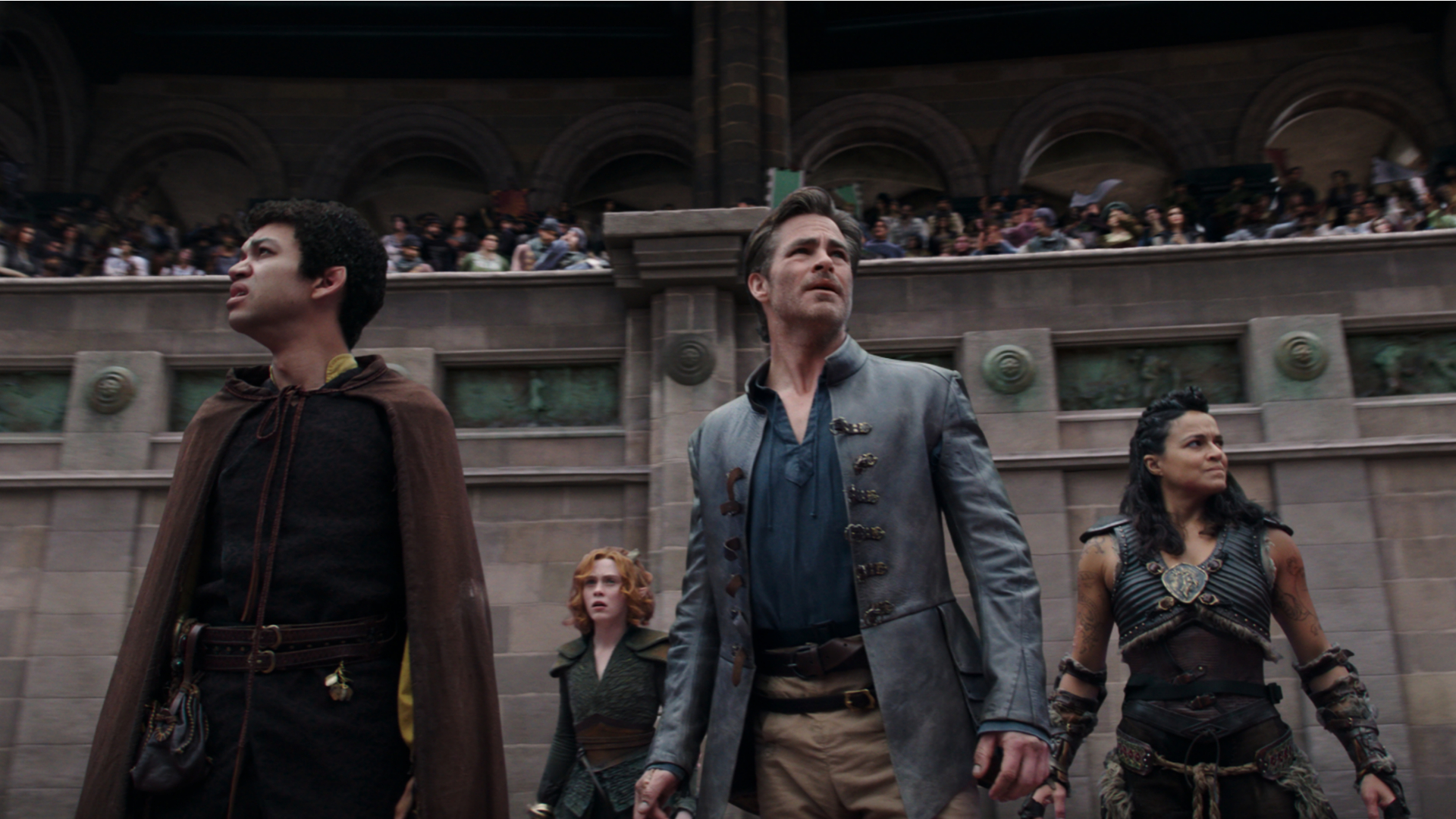
This feature originally appeared in issue 335 of Total Film. Subscribe to Total Film here to never miss an issue.
"They’re absolutely right, I do hate everything, and I hate everyone…" Total Film’s just hopped on an evening Zoom call with Hugh Grant and shared the sentiments of Jonathan Goldstein and John Francis Daley – the directors of Dungeons & Dragons: Honour Among Thieves – who previously told TF that, when casting their fantasy epic, they were hesitant about approaching the British icon because of his high standards. They needn’t have worried.
"First, I thought [the script] was touching and funny," Grant says. "And then I spoke to [the directors]. I picked up a Monty Python vibe. And I thought it was quite amusing for me, after all these years, to do one of these huge mega-budget franchise special-effects things."
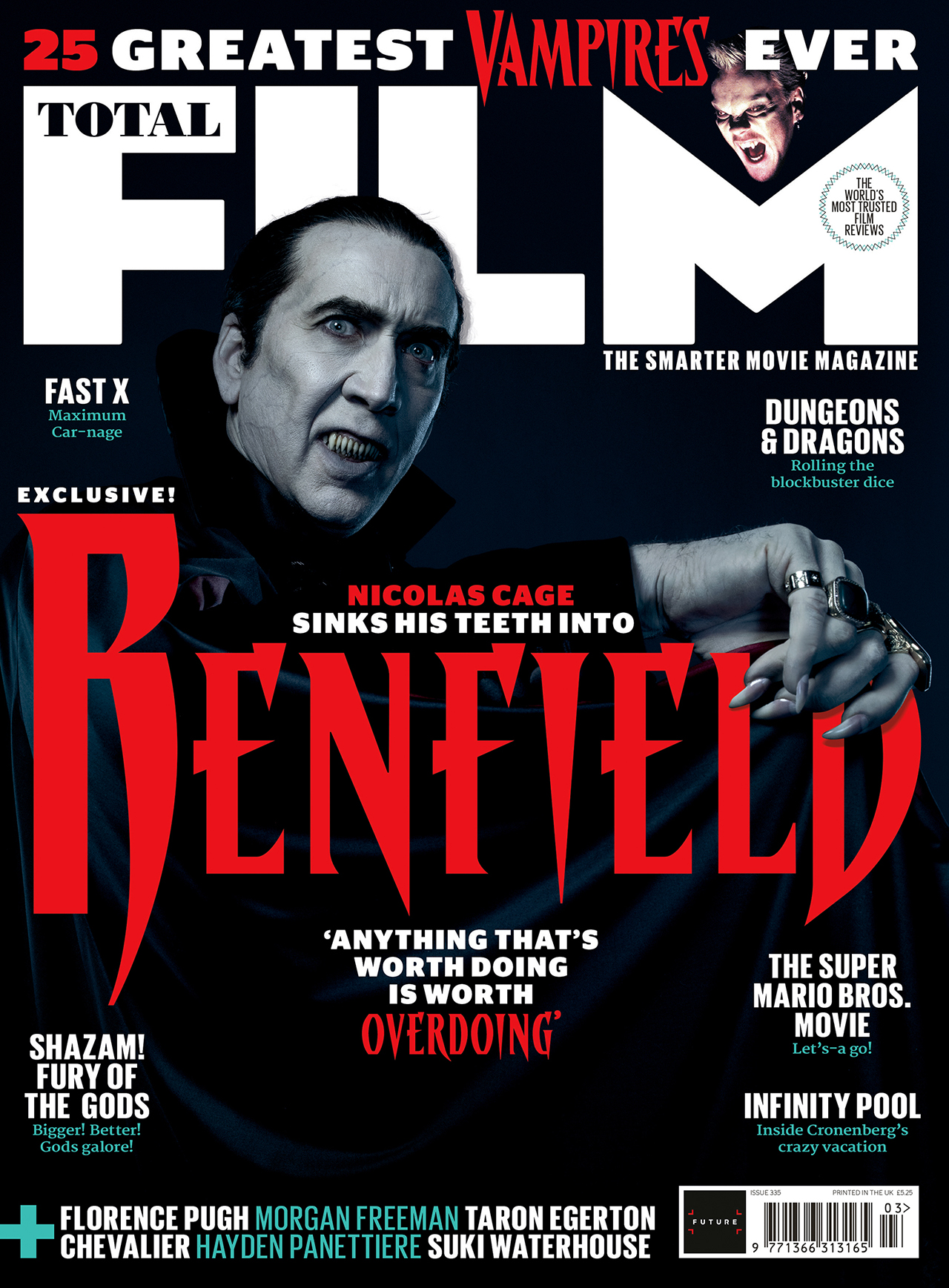
This feature first appeared in Total Film magazine - Subscribe here to save on the cover price, get exclusive covers, and have it delivered to your door or device every month.
Whereas a Dungeons & Dragons movie seems an amusing next step for Grant, it was a straightforward one for Chris Pine, the man who previously brought James T. Kirk, Jack Ryan and Steve Trevor to the big screen. "I didn’t know anything about Dungeons & Dragons," Pine admits. "I went into it pretty tabula rasa and was really enamoured by this very specific tone. Tentpoles fit into being either snarky or meta or self-aware or earnest, and this landed in the earnest, heartfelt camp. There’s certainly some self-awareness, but nothing that gets in the way of old-fashioned, populist filmmaking."
Considering he didn’t know his Dragonborn from his Demogorgon, Pine had a lot to catch up on. D&D, a tabletop game, sees players take on roles as Fighters, Sorcerers, Wizards and Warlocks as they head out on various quests, each one dictated by an all-knowing Dungeon Master. Millions of people around the world have embarked on adventures – and Hollywood has been hungry to start a film franchise based on the game’s lore.
Adventure time
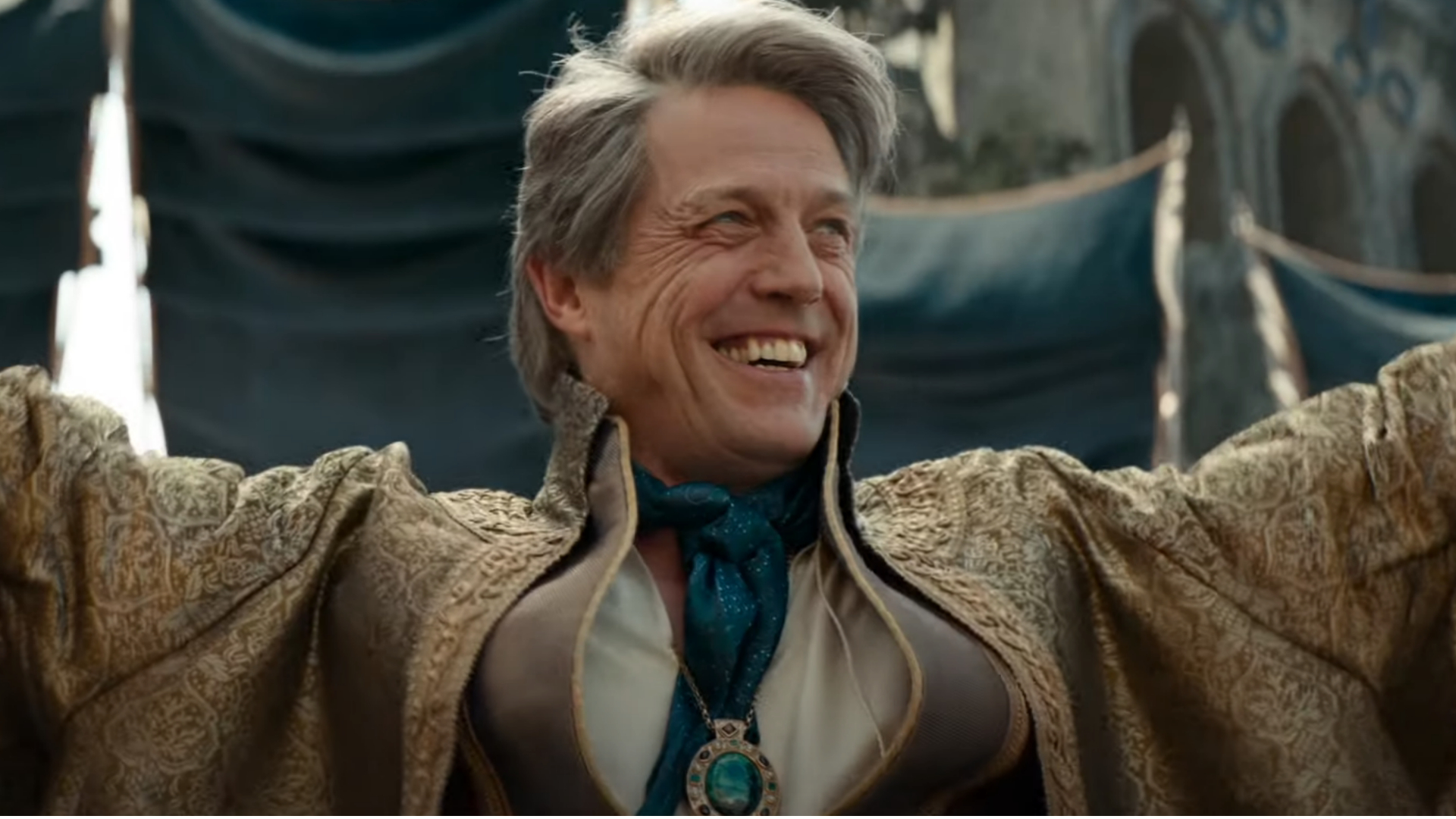
A previous cinematic adaptation (starring Jeremy Irons, back in 2000) was a critical flop, but the interest in D&D has long continued, buoyed recently by the success of Stranger Things, the Netflix series in which a group of teens play D&D, and Prime Video’s The Legend of Vox Machina, an adult-oriented animation based on a popular internet group’s D&D campaign.
"This is one of those projects that has so much in terms of expectations on it," says Michelle Rodriguez, no stranger to adaptations with major inbuilt fanbases (Resident Evil) or huge franchises (Fast & Furious, Avatar). "To do something this big, that has so many years of board games and cartoons, it’s like taking on a DC or Marvel. I tread very carefully when touching things like that because I don’t want to be in the video-game movie that fails. That’s not what I want to do for a living!"
Like Pine and Grant, she was won over by the creative duo leading this endeavour: Goldstein and Daley. Previously best known for helming the comedy Game Night and writing Tom Holland’s Spider-Man: Homecoming, they didn’t want their movie to simply play inside the D&D sandbox – there had to be something more. They also didn’t want to go down the Jumanji route, having real-life people trapped in a board game. This is a straightlaced fantasy movie through and through.
"We wanted to create a movie that could stand on its own, even if you stripped away all the fantastical elements; a movie that could work in another genre," says Goldstein, sitting alongside Daley and their producer Jeremy Latcham. "Like how Homecoming was a John Hughes high-school film with superpowers, this started off as a heist movie gone wrong. That felt like a great campaign for a troupe of less-than-perfect characters to engage in. And then we just added all the accoutrements of the world of D&D."
"It’s so very Dungeons & Dragons [to be in the heist-movie genre]," Daley adds. "It’s the theme of many campaigns. And Chris Pine as a Bard is an unlikely protagonist. People don’t choose the Bard when they’re campaigning unless they have a sense of humour. His whole superpower is inspiring people. He’s a storyteller, but he also makes the plans, and doesn’t necessarily like to get his hands dirty." A grin stretches across his face. "That’s more Michelle Rodriguez’s character’s job."
The bard batch
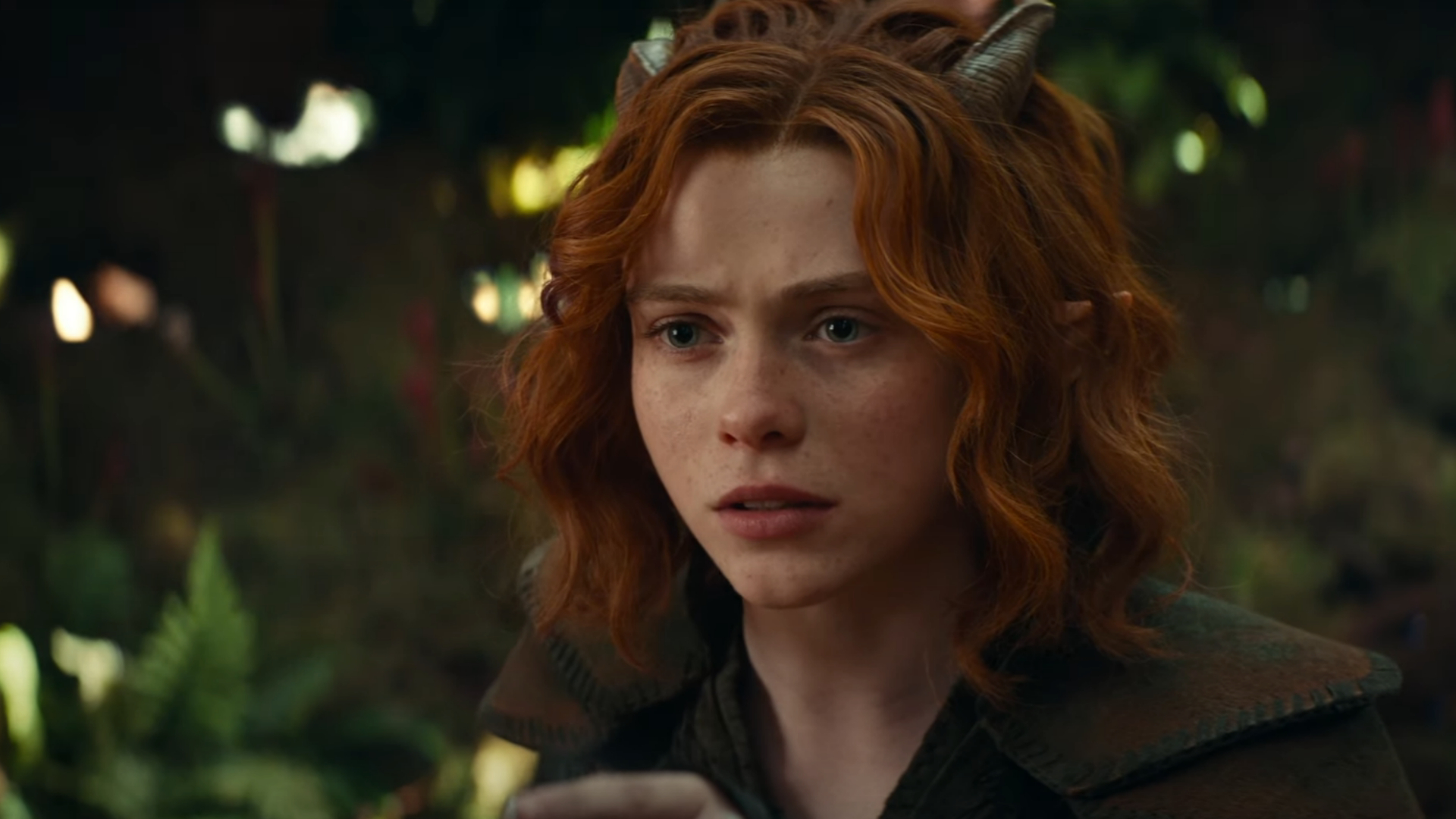
Ah yes, the group of adventurers going on this quest. First, the set-up: after a mission goes awry, Pine’s Edgin, a Bard who’s a dab hand at the lute, is imprisoned alongside Rodriguez’s Holga, a bruising Barbarian. Three of their conspirators manage to avoid prison – Justice Smith’s Simon, a Sorcerer; Hugh Grant’s Forge Fitzwilliam, a conniving Rogue; and Daisy Head’s Red Wizard of Thay – but only Simon and newcomer Doric, a shapeshifting tiefling Druid played by Sophia Lillis, agree to help Edgin and Holga rectify their wrongs (through more stealing) after they escape jail. Along the way, they meet a wildly handsome Paladin called Xenk (played by Bridgerton’s Regé-Jean Page), take on a dragon, and raise the dead. To use a word Rodriguez frequently exclaims, it’s an absolute hoot!
"We are quite an eclectic group," Smith says with a smile. "We are four very different people. And somehow that works, because we all come from different corners of life. There’s no overlap, really. Every single personality is an individual."
"It’s like The Goonies, in terms of great ensemble casts that are off on an adventure," Pine says. "You want a bunch of different qualities of human beings to play off one another. You had Sophia who’s very quiet, introspective, super-intelligent and observant. You have Justice, who’s got great comedic timing. You have Regé playing up to his profound handsomeness and he really has a wonderful amount of self-awareness. You have Michelle playing gruff. You have me playing wily and charming and a bit vacuous but positive nonetheless. Hopefully, it’s an alchemy that people really relate to."
As a bonding exercise, the cast played D&D together; they were, Smith reveals, tasked with imagining what their characters would do after the events of the movie. For many of the cast, it was a new process: they hadn’t played D&D before. Lillis was perhaps the biggest aficionado – "Every day after school, I took the train over to my old school, which I transferred out of, and walked right into their D&D session," she says – followed by Rodriguez, who had previously played the game. P
age and Smith, like Pine, were not D&D players, and Grant has still yet to play ("I don’t really understand how it works," he tells TF at one point). "It was as anarchic as it sounds," says Page. "It was just like getting an old-fashioned acting troupe together, learning how to bounce off each other and how to be playful, which really is the core of this movie and the game."
"Nothing beats going on a micro-micromicrocosmic version of a D&D campaign before you go on a multimillion-dollar version of it," Pine says. "You’re testing the waters in terms of energies, and just seeing what everybody’s all about. It was really nice to have that time on the pitch before the stakes were high."
The prep time paid off, the cast solidifying their bond and their enjoyment evident throughout our chats. However, despite Honour Among Thieves having such a loose sense of humour, Goldstein and Daley were not ones to encourage improvisation.
"John and Jonathan knew exactly what they wanted," says Smith, who doesn’t normally enjoy working under strict conditions. "They just saw the entire movie in their head before we shot and I’m happy that they stuck to their vision because it’s an incredible film." Pine concurs: "They are not huge fans of going off their script, which could prove to be, for someone like myself who loves to spitball, frustrating at times. But when you see the finished film, it all works. There was never any doubt about that."
Game night
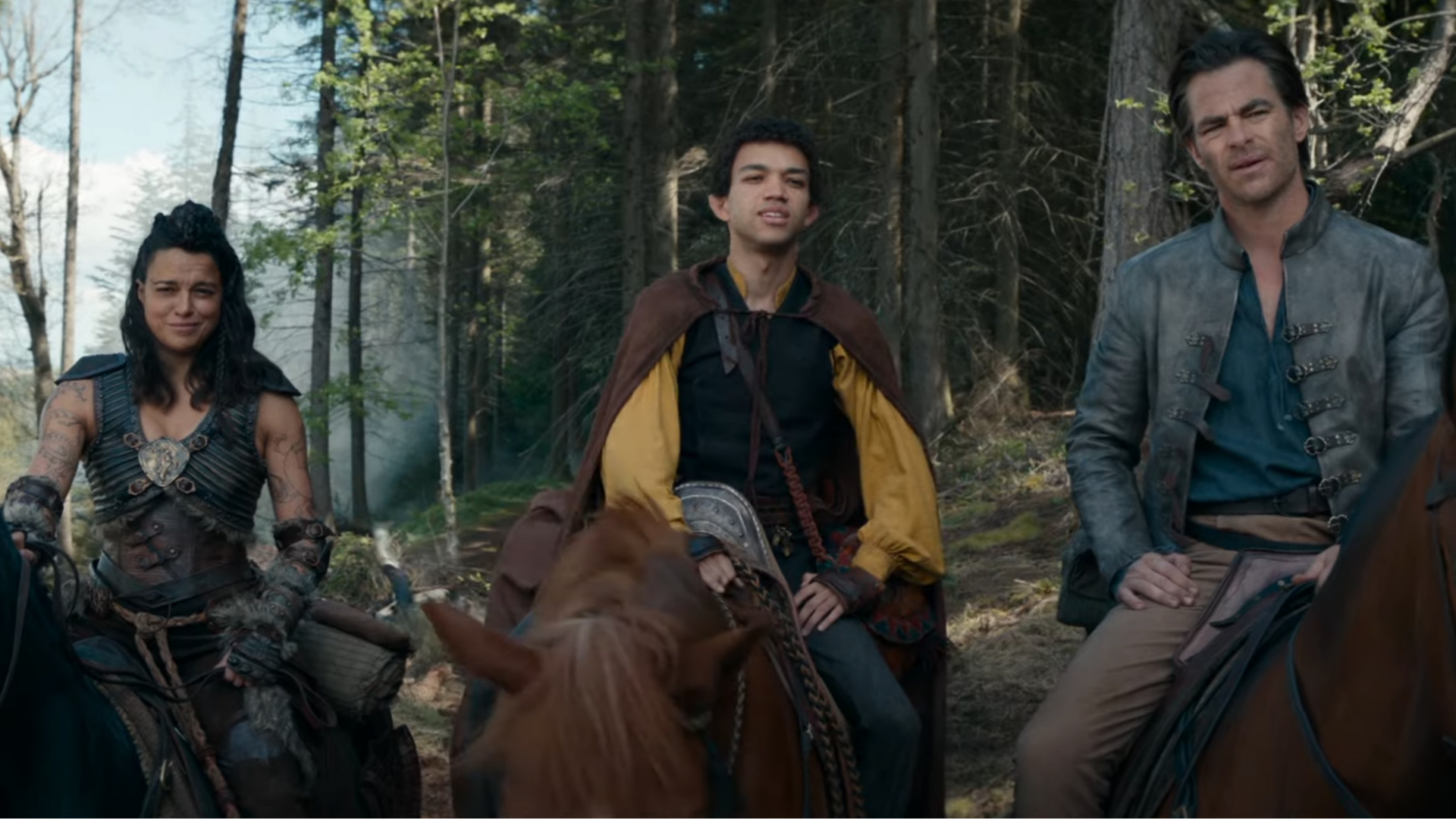
For Grant, the bigger concern was whether the filmmakers could keep their movie feeling human when there were so many special effects involved. "That’s always the worry for me when things start to involve monsters and special effects, that it’s going to become too technical," he says. "I like things quite fluid to keep the acting alive. Otherwise, it becomes a cartoon where you just shout [dramatic voice], 'Noooo' or 'Come back!' And it’s nice to interact with humans and for directors to appreciate that it is a human medium. I felt that that was preserved, despite the giant ironmongery."
To keep things human, Goldstein and Daley prioritised physical sets, monsters and scenery over green-screen creations. In fact, their producer, Latcham, says they built around 120 practical sets, and that’s not including the actual, real erupting volcano they shot in Iceland (see TF333). "The movies I’ve produced are all massive Marvel films," Latcham says. "We built more scenery on this movie than on any of those films. More square footage of sets. Because the film is like a travelogue. It’s constantly moving."
For the actors, it proved a welcome respite from the usual VFX work. "I’ve been so used to acting with green screens and tennis balls," says a wistful Pine. "The nature of being an actor is you use your imagination, so I can act with a wall. Computer graphics are fantastic and they allow for really wonderfully complicated things to manifest on screen, but I feel pretty inured by it. Even if the CG is so well done, we can still tell."
"Having something to play in front of, this is going to sound cheesy, but you get to plug into the magic much earlier," says Page. "Which hopefully helps you give a better performance and that comes through in the final story." Animatronics were vital in bringing the world of D&D to life.
Creatures, both big and small, were built by the production team, which included hands who worked on Jurassic Park. "We wanted to embrace what made fantasy and adventure films from the 80s so special," says Daley. "And it’s amazing," Latcham adds, "because using animatronics in the 80s, and using animatronics now, is so vastly different."
Daley explains that they had people off screen in mo-cap suits acting out what the creatures were doing, and that would then transmit to the physical puppet on camera. "It was some groundbreaking technology used for something that had been around forever," he says. "When people say practical effects, there’s often this memory of Jurassic Park," Latcham continues. "Practical effects haven’t stopped innovating since then."
"Jurassic Park was very much our spirit animal in our approach to this film," Goldstein concludes. "What Spielberg did so perfectly was to blend practical and visual effects. And that’s what we were able to do with this." Rodriguez highlights another famous filmmaker the team were inspired by. "With [Goldstein and Daley], when they write, they understand that it’s very important to have love. If you have a big story without love, you’re gonna fail. That’s a Jim Cameron quote, and he’s right."
"Heart is first and foremost," says Daley. "It’s the most important thing: investing in your characters, really caring about what happens to them. Audiences are savvy enough to know when something is just a blatant, commercial cash grab that doesn’t have any meaning or substance to it. We wanted to make a good movie, first and foremost, and it just happened to be within the construct of this fleshed-out world that was really fun to explore."
Tenacious D&D
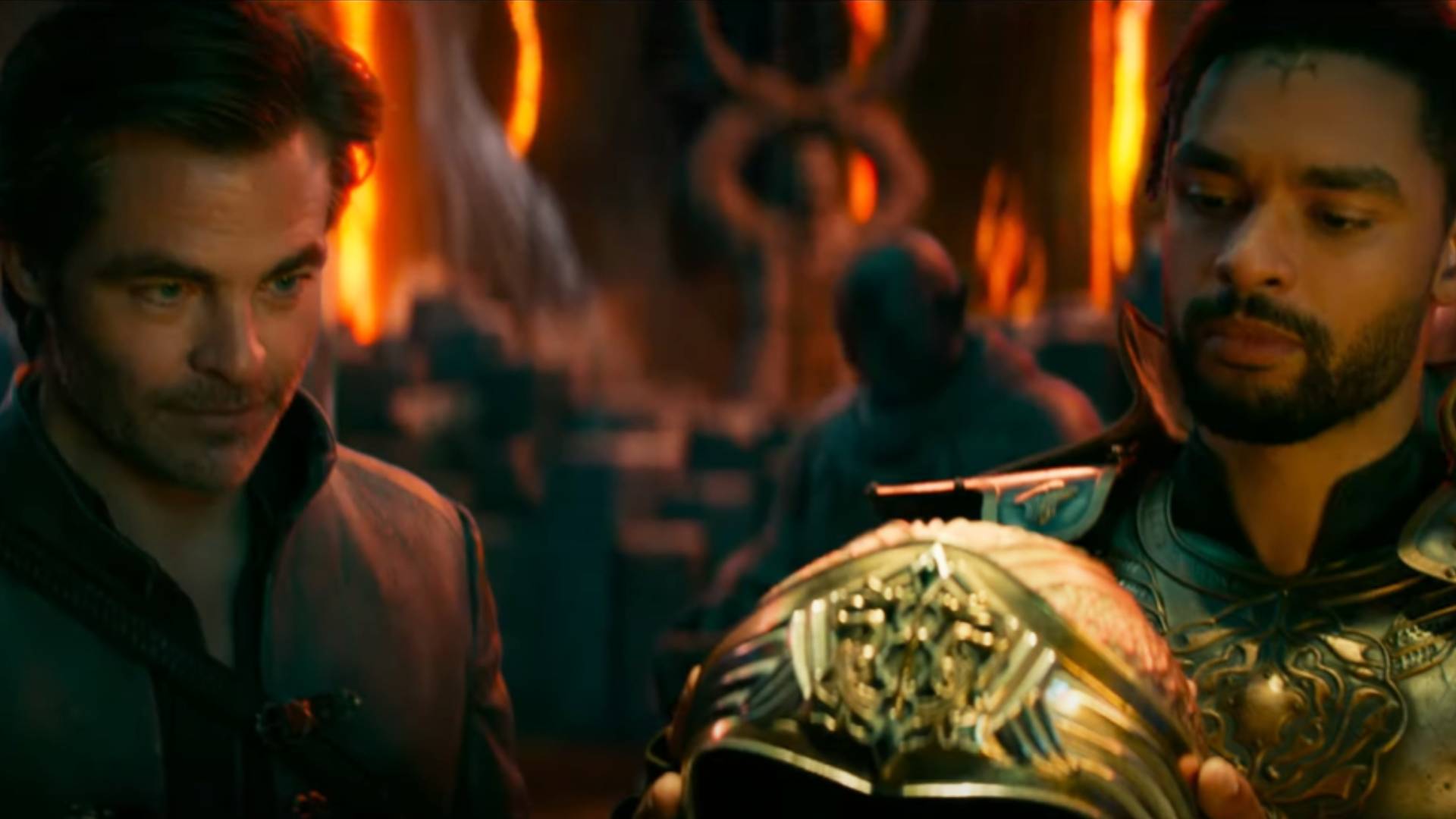
And there’s a lot more to explore. Already, a Dungeons & Dragons TV series is in the works over at Paramount+. None of the cast will budge on whether they will appear in the show, but they all say they want to return for a sequel. For Pine, it’s about more than just picking up a lute again.
"If I make a film of this size, I’m pretty much guaranteed an opportunity to be in a movie theatre," he says. "I’m still a big believer in movie theatres. I’m not a huge fan of change. This whole revolution of watching things that we spend our lives dedicated to, people watching them on phones, is terrifying. Add to that, D&D’s a world I believe in, and it’s a board game that I actually believe in, that I think should be introduced in schools. I would be proud to come back and spread the gospel of Dungeons & Dragons."
Either way, Honour Among Thieves works as the first instalment in a series or a one-stop adventure. "We would love to continue to build out this world, but that’s not how we approached the movie," Goldstein says. "It only matters if this is a good movie, in and of itself. We didn’t plant lots of little seeds for later development."
"I remember on Iron Man," continues Latcham, "I said to [Marvel’s] Kevin [Feige], 'I have a really great idea for Iron Man 2.' He said, 'What’s Iron Man 2? There’s no sequel if this movie’s not great. If you have a great idea, we put it in the movie.' And I said, 'What happens if that was a good idea for the second one?' He goes, 'If we can’t come up with new ideas, we shouldn’t be in this business.'"
"And where is he now?" Daley jokes. "But that said, we were very conscious that we were introducing a world that is so much bigger than even the sum of the parts of the movie itself. We do create a springboard for other stories that utilise these characters, and introduce new ones, and take us to new locations and worlds."
Total Film suggests this could be D&D Phase One. Goldstein cautiously laughs. "We just need another word for 'phase'," he says. Considering these are the guys who won over Hugh "I hate everything" Grant with their earnest, funny and heartfelt script, they probably won’t have an issue coming up with another name for their fantasy franchise.
Dungeons & Dragons: Honor Among Thieves is available for stream on Paramount Plus now.
For more on the end of year, check out our guides to the best films of 2023 and the best TV shows of 2023.







